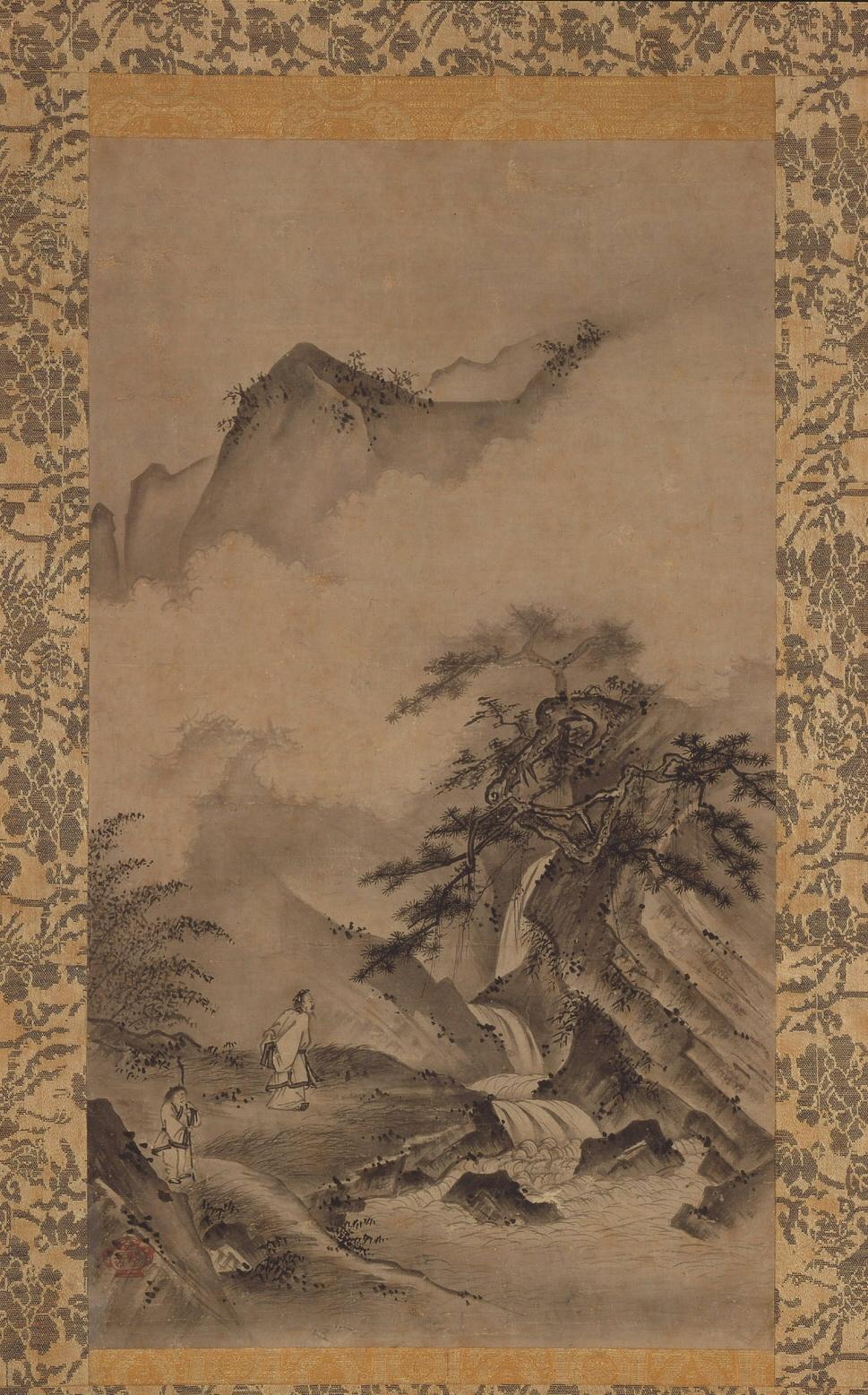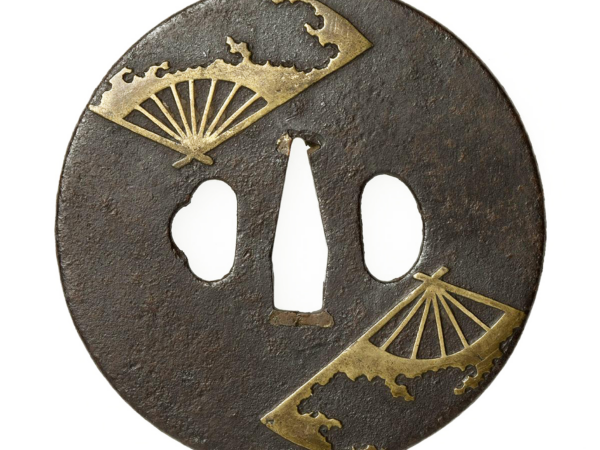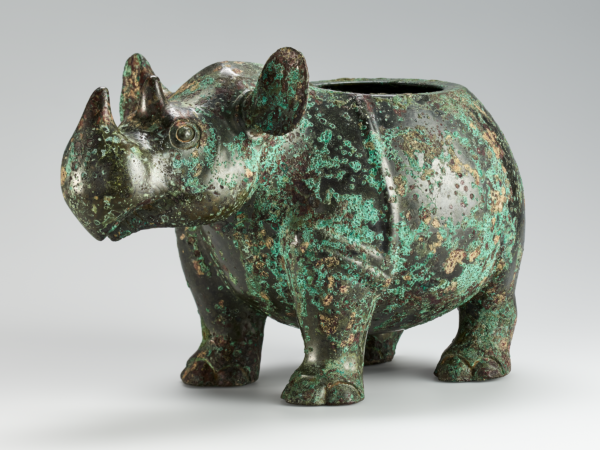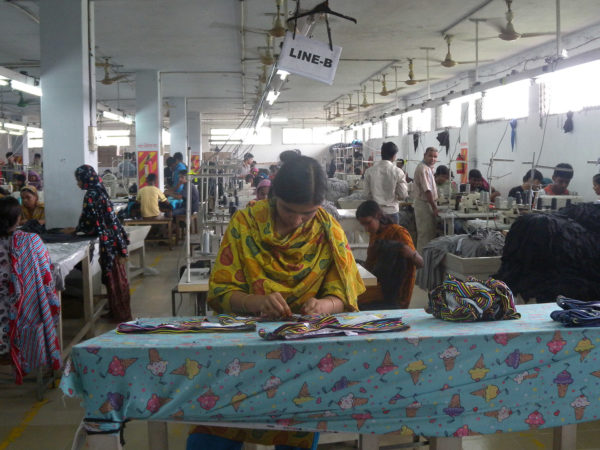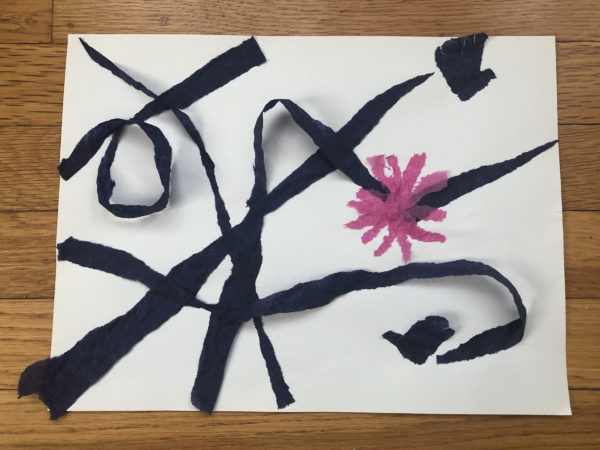Activity
Muromachi Period Tea (1338-1573)
During the Muromachi period (1338–1573) the vogue for Chinese art, especially among the Ashikaga shoguns, who ruled as the military leaders of Japan during this period, led to the development of new architectural environments in which to display collections of tea-related objects.
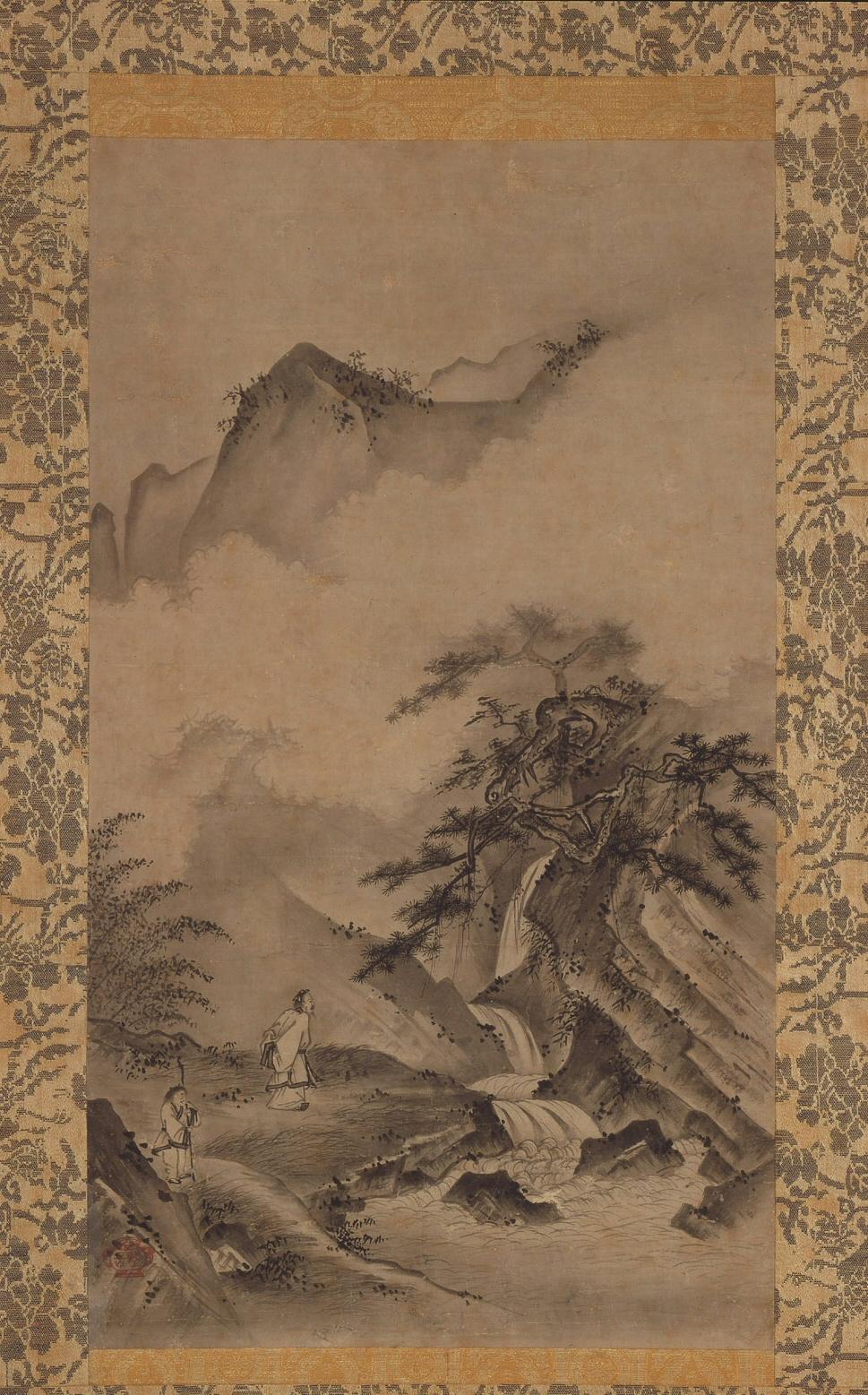
Li Bo Viewing the Waterfall.
Introduction
During the Muromachi period (1338–1573), the vogue for Chinese art, especially among the Ashikaga shoguns, who ruled as the military leaders of Japan during this period, led to the development of new architectural environments in which to display collections of tea-related objects. Art, architecture, tea, and temple etiquette melded, to produce a style of tea known as shoin,named after the rooms in which it was served that were modeled on a Chinese scholar’s study. The Ashikaga collection became so vast that a staff of curators was necessary to maintain it (Soami, the painter of image above, was one such curator). The curators were responsible for the care of the objects, the creation of a setting that allowed the beauty ofthe objects to show forth, and the preparation and presentation of tea. At early shoin gatherings, the host did not make tea himself, but sat with the guests and was served tea by the curators. Reflecting the wealth and power of the early Ashikaga shoguns, shoin-style tea emphasized collection, evaluation, and display of Chinese art in its characteristic perfection of form, superlative technique, and flawless surface beauty.

